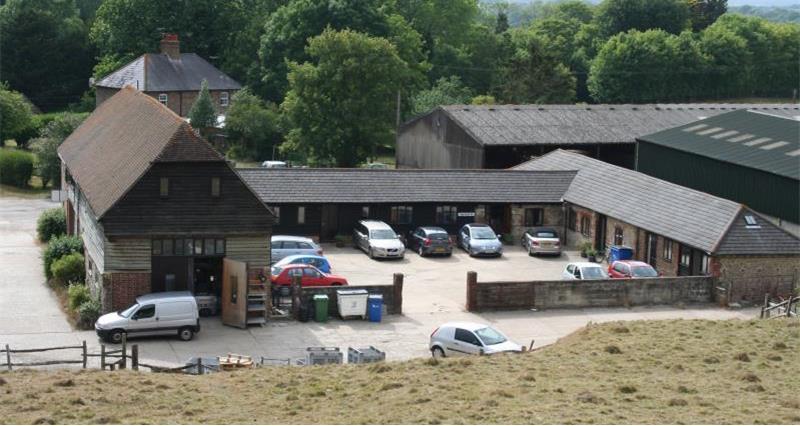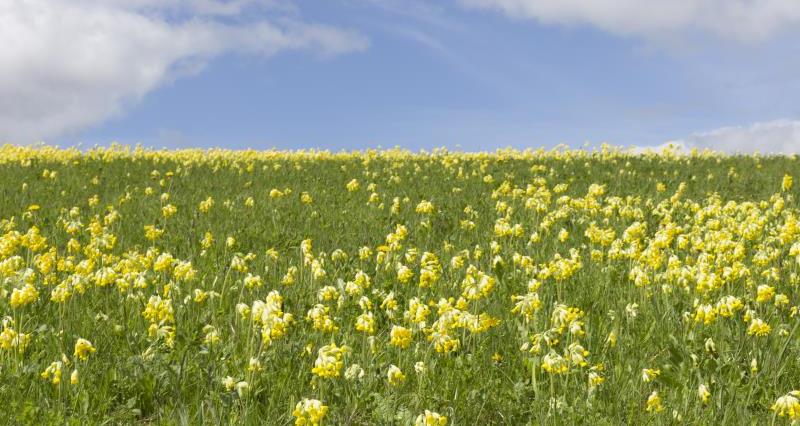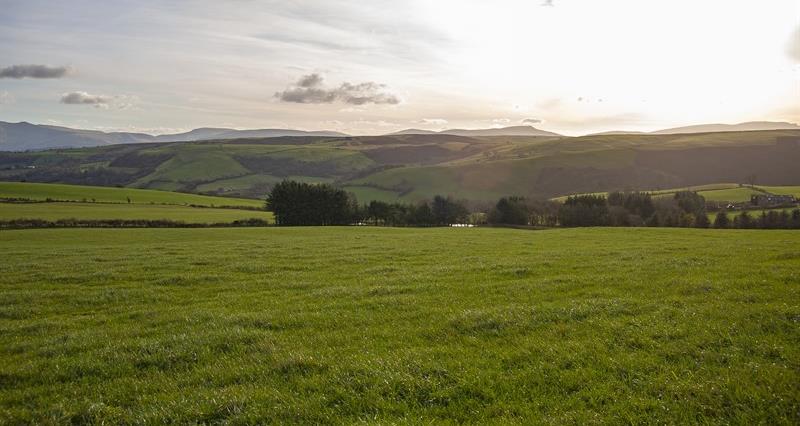What are LNRS?
LNRS (Local Nature Recovery Strategies) are spatial strategies which plan, map, and create priorities for nature in a given area. There are 48 strategy areas which cover the whole of England. Each strategy will include a Local Habitat Map and a statement of biodiversity priorities.
The responsible authority for each strategy has appointed by the Secretary of State. They are led mainly by local authorities but developed and delivered in partnership with a wide range of local stakeholders, including farmers and landowners. A map of the LNRS areas, a list of the responsible authorities, including their LNRS webpage and contact details, can be found on GOV.UK | Areas and responsible authorities.
Regulations and statutory guidance for responsible authorities has been published and outlines what should be included in a LNRS – this, alongside £14 million worth of government funding, has been allocated to help ensure that LNRS are consulted on with key stakeholders and are developed consistently across the country.
The NFU continues to engage with Defra and responsible authorities to influence the content of LNRS and ensure that farmers and landowners are sufficiently engaged with and consulted on their local strategy. However, there is no legal requirement to consult every landowner.
Impact on farming businesses
BNG
LNRS were introduced as a legal obligation under the Environment Act (2021). Their principal aim is to create space for nature to deliver BNG (Biodiversity Net Gain), but they also have broader purposes.
Since February 2024, mandatory BNG legislation has required certain developments in England to reduce and restore any biodiversity lost during the building phase and deliver a 10% minimum boost to biodiversity. It can be delivered onsite, offsite or through credits.
The strategies will help identify the priorities and locations for nature recovery in a given area which could be delivered through BNG habitat creation or other private and public funding.
If an area has been identified for nature in a LNRS, it could affect how BNG units are calculated in the Biodiversity Metric.
Exactly how this is applied will depend on the ‘strategic significance’ of the BNG location and habitat type. This will impact those thinking of creating BNG units for the market but also those planning a development which could be impacted by BNG.
More detail about BNG can be found at: Biodiversity net gain consultation – latest news.
Environmental targets
Although the primary purpose of LNRS are to help deliver BNG, the strategies will also help contribute to delivering national environmental targets on water and air quality, biodiversity, and trees.
Planning
A legal requirement for LPAs (Local Planning Authorities) to ‘have regard’ to LNRS was created in the Environment Act 2021.
The government has subsequently updated the PPG (Planning Policy Guidance) to include LNRS and explain how LPAs ‘have regard’ for LNRS in local plans and planning decisions.
The guidance provides best practice for decision makers and is useful for applicants to determine how their planning application will be judged and to ensure they can provide the best quality application.
The PPG confirms that, for planning decisions, the strategies would be a material consideration. A planning application may therefore need to show how it considers the LNRS; this may be part of a written statement alongside other local policy considerations.
It is unlikely to stop a development, it might mean mitigation activities are required. Ultimately, how it affects a planning application and development will come down the individual circumstances and case law.
Draft LNRS will still be able to influence planning applications.
The PPG also confirms that for Local Plans, the LPA will consider the content and reflect the LNRS in the Local Plan. This will need to be balanced among the other needs of the area.
Further reforms and consultation to planning policy will mean that additional changes are expected to this guidance. This will include changes to reflect the implementation of the LURA 2023 (Levelling-Up and Regeneration Act), which includes a new legal duty on plan makers to ‘take account’ of LNRS.
Funding – ELMs
LNRS could also serve other purposes in the future.
The government has recently published a blog explaining its current intentions for the strategies. It confirms that LNRS are a tool to help inform land management decisions about nature and that in the future ‘LNRS will help government when considering applications for funding specific to nature recovery activities, by acting as criteria in applications for some schemes’.
This could mean there is a link with ELMs (Environmental Land Management schemes).
The actions in LNRS are currently optional and must remain so; if certain actions or areas for nature aren’t identified in a LNRS, it is important they should not be prevented or have limited access to funding. These are key NFU asks of government.
Timeframes
Preparation for LNRS formally began during April 2023. Although there are no set timescales for LNRS preparation, the government has provided funding for LNRS preparation until March 2025.
Responsible authorities are working on the strategies at difference paces. Two have been published so far and many will be approaching the consultation phase in spring and summer 2025.
There is a 3 – 10 year review cycle for the strategies; a review would need to be called by the Secretary of State.
The review cycle kicks in from when the regulations were first published (March 2023), not when the strategies are published.
The NFU continues to push the government for more flexibility for landowners and managers to request changes to published LNRS maps.
How can farmers and landowners get involved?
Farmers play a vital role in helping to deliver outcomes for nature.
It is therefore important that farming representatives and farmers have the opportunity to engage in the development of these strategies to ensure they work for farm businesses including their own ambitions for nature.
NFU representatives are already sitting on many responsible authority LNRS stakeholder groups which are developing their local strategy.
Farmers must also have the opportunity to be engaged with the strategy at various levels and stages throughout its development. It is up to the individual farmer or landowner how or if they engage; this could be sitting on a stakeholder group, attending a workshop, or responding to the public consultation.
The public consultation is, however, the last stage of stakeholder engagement. Therefore, engaging ahead of this should help ensure a more representative strategy.
Farmland can be mapped for nature on a LNRS map, but it is up to the individual landowner/manager to decide how and if it’s mapped in the strategy. This is especially important given the links between LNRS, planning and funding. Once the strategy is published this map cannot be changed until the strategy is reviewed (3 –10 years).
The responsible authorities are actively reaching out to farmers and landowners in their area to seek engagement and feedback. Those interested in being involved or looking to understand more about their LNRS should contact their local responsible authority.
Some farms will fall into multiple LNRS areas. Responsible authorities should consult with their neighbouring authorities when creating the LNRS to ensure consistent strategies are developed across boundaries while still allowing for geographical variations.
Once published, the strategies are being proposed as a part of the toolkit to help inform local land management decisions about nature. Other aspects of the toolkit may be baselining biodiversity on farm, using specialist advice, and funding.
NFU key asks
At a national policy level, the NFU continues to work with the government to inform LNRS policy developments that deliver the best outcome for members.
To help ensure members are consulted on their local strategy, the NFU supported Defra in developing farmer and landowner engagement guidance for responsible authorities.
A long standing ask has been for greater clarity and consideration for the impact the strategies could have on farm planning applications. The government has now published Planning Practice Guidance and blog to provide some clarity.
It is important that the actions in the strategies are not a requirement and do no limit development or access to funding. This blog confirms that there may be a link between LNRS and funding (ELMs).
The NFU would also like to see the government create a more flexible approach to LNRS which enables landowners and managers to remove, add or change their mapped land or data once a strategy has been published.
At a local level, its it vital that responsible authorities are engaging with farmers and landowners to ensure that they have been consulted with throughout the LNRS development process.
This will ensure that the strategy accurately represents what is happening on the ground and what could be achieved alongside farm businesses and food production.
The content of the LNRS must be based on sound, scientific evidence with local stakeholder input. Farmers and landowners engaging in the strategies should carefully consider what land they include in the LNRS and any data they share, given the links with planning and funding.
Key considerations for responsible authorities developing LNRS
The NFU has developed the below key considerations for responsible authorities developing LNRS. This should help inform NFU members and staff engaging with their local strategy development.
It is vital that the responsible authority and LNRS recognise agriculture as a keystone activity in the countryside. Farms produce food, fibre and energy whilst also caring for the environment; these
businesses will be at the forefront of delivering the strategies.
The LNRS should not prevent or add cost to farms trying to diversify, modernise and develop infrastructure, create unintended consequences on farm operations or act as a barrier to funding
(private and public). It should be a tool to help inform local land management decisions about nature.
1. Thorough farmer engagement and consultation
The responsible authority must engage and consult farmers thoroughly. It is important this is done in the early stages to ensure that the strategy reflects what is happening on the ground and what farm businesses want to achieve.
Defra has created responsible authority guidance on engaging with landowners and farmers with input from the NFU. It provides useful information on how best to engage with the agricultural sector including when and how, and the key messaging to use. It is important that the responsible authority is transparent with farmers about the links with planning and funding which could impact their businesses.
Responsible authorities must recognise the value of farmers’ time in engaging with the LNRS development.
2. Recognition of farm contributions to nature
The LNRS must recognise the environmental contributions and improvements that farmers have already made, as well as any planned future contributions such as ELMs and off-site BNG.
Farms will have their own priorities for nature –with consent, this should be recognised in the LNRS.
3. Use sound, scientific data
Data used to inform the LNRS must be from sound scientific sources. Data about agri-environment schemes such as Countryside Stewardship is available on Magic Maps and could be used in the LNRS if agreed by the landowner/farmer. Farm level data should be considered where relevant. It is important ground truth data is used.
4. Appropriate mapping
Depending on the area, certain parts of the farmed landscaped would be more appropriate to include and prioritise/map in the strategies compared with others, hedges may be an example of this.
Identifying Best and Most Versatile agricultural land for nature and potentially land use change could have unintended consequences and many not be in line with the farmer’s own ambitions for that land.
5. Access to funding
Many farms will already be involved in, or planning to enter, into ELMs or private markets agreements. The LNRS should help enable farmers to access funding for nature alongside productive agriculture. The priorities in the strategy should account for this.
6. Consider impact on farm developments
Farms need to diversity, modernise, and develop farm infrastructure to remain economically and environmentally sustainable businesses. The LNRS and associated local plans have the potential to impact on a farm planning decision and how many BNG units a farm development might need to create.
This could prevent or add costs to these developments. The LNRS mapping should, where possible, exclude planned developments.
7. Careful consideration of species and actions for wildlife
The list of priority species created as part of each LNRS should be consulted on and align with the government’s national species target and ambitions. Actions to support certain species must be carefully considered to avoid causing unintended consequences on farm businesses and food production.
If wildlife crossings, eg, green bridges, are being considered in the LNRS, it is important to be aware of the potential risks created by these structures, such as the spread of animal diseases and the need to consult with landowners about their potential location.
8. Farmer choice and flexibility
Prior to publishing the LNRS, farmers must be consulted with and given the opportunity to check their land’s data and choose how or if their land is mapped in the LNRS. Please do consider the consultation feedback received from the farming industry and if further consultation may be required.
9. Joined up LNRS across farmland
Farm businesses cross over LNRS areas; it is therefore important that neighbouring strategies work together to ensure consistency across boundaries especially in the mapping.
More from NFUonline:




